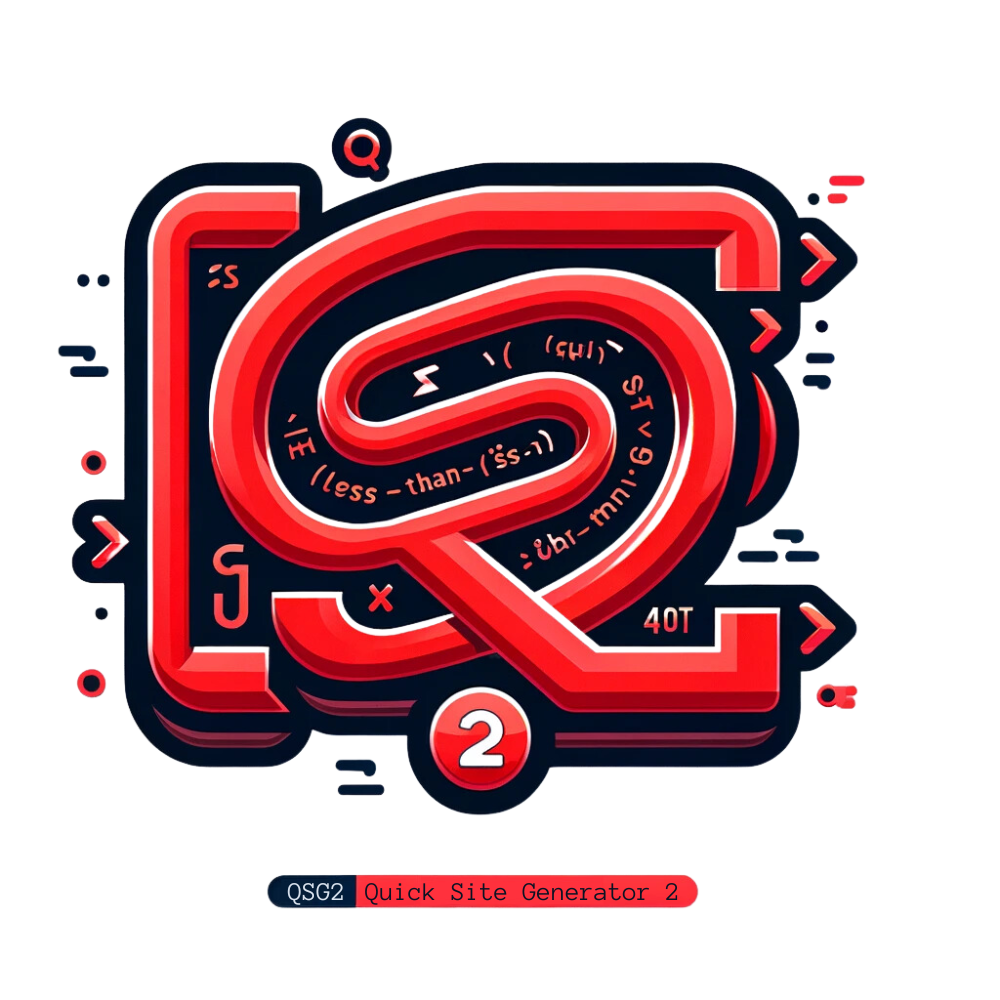- Update to version 0.3.5 - Updated the link to Zsh in the README file. - Made changes to the _pages function in the qsgen2 script to use Zsh built-in functions for finding the page title. - Added support for finding the page title in markdown files in the _pages function. - Added support for finding the blog title in markdown files in the _blogs function.

Quick Site Generator 2
Quick Site Generator 2 is a static website generator inspired by Nikola and written for Zsh.
Why?
Well, I wanted something that worked for me and wasn't too complicated and I also like a challenge.
It all started with a simple script I wrote that I called myjourney to write about a journey I was on. It worked well enough, but soon I wanted to create something else and something more complex.
So I started to write another script I aptly called generate.This also worked really great. It was, however, very limited and not very portable.
Then this script was born. It has the same ideas as the first two, but is an almost complete rewrite of generate. It does, however, use some of the same functions and is also more portable. The next steps is to try to use more of the Zsh modules instead of always relying on external tools like Perl, sed and awk. In other words, a work in progress.
What is qsgen2?
qsgen2 is capable of creating static HTML pages using the native _html engine that uses QStags (that I'll describe in detail later) or by writing your pages and blogs in Markdown. It uses Pandoc, mostly because it's the most compete tool for the job. Not all Linux distributions have it, so you can just download the binaries and place them where it suits you the best.
You cannot mix native and Markdown when creating your projects.
What it's not!
Quick Site Generator 2 is not easy. It's not bug free. It's not a professional product. It's not really production ready, although it works great for me.
Configuration
Copy qsgen2 and the directory include to ${HOME}/bin/.
Then create you project directory, for example ${HOME}/sites/new-site.
Copy the file config and the directory themes to your project directory.
You first have to configure your site and this is done in the file config. Do the necessary changes.
Create a directory named blog if you want to have blogs on your site.
Create your index file with either tpl to use the native engine or md to use Markdown.
I will, as mentioned, create a how-to on QStags.
I am considering adding a command line, init, that will guide you through this process in an interactive manner.
Themes
qsgen uses templates that reside in $project_dir/themes/<theme name>.
The theme consists of 4 files:
- blogs.tpl
- pages.tpl
- blog_index.tpl
- blog_list.tpl
Blogs
The file blogs.tpl is used to create the blog posts that will reside in $www_root/blogs/year/mon/date/title-of-blog-post.html.
qsgen2 will list all the files in blog/*.blog and do its magic before the word/tag BODY in the blogs.tpl file is replaced with the HTML formatted content and then the file will be written to disk.
Other tags/words that are replaced are:
- BLOGTITLE
- CALADAY
- CALNDAY
- CALMONTH
- CALYEAR
- INGRESS
Then the footer of the document is updated with today's date and the name and version of the script.
The themes engine is not 100% complete because there still are some static text that could or should be replaced. It is, however, quite easy.
Blog Index
There is an option in the file config if you want to show the blog on the front page or not. If set to false, it will write a file in $www_root/blog/index.html that contains, in reverse order, the blogs written.
To do this it uses the file blog_list.tpl as a template for how to format this list and then it inserts this into the file blog_index.tpl which then is written to disk.
Pages
The process of creating pages is almost the same as with blogs, but with fewer, and other, replacements.
Tags replaced are:
- #pagetitle
- #tagline
- BODY
And then the footer gets the same touch as the blog posts.
Knows bugs
- Sometimes it doesn't write the Blog Index file (/blog/index.html) with all the blogs, only the latest.
- The problem is that when a new blog post is added, it doesn't get added to the list of posts